The most nutritious part of an animal is its organs. When our Paleolithic ancestors transitioned from being scavengers to hunters about two million years ago, they suddenly had access to the organs and fat of their prey. As Dr. Bill Schindler explains in his book Eat Like a Human, this caused a dramatic increase in brain volume.
The main reason why this dietary shift had such a profound impact on human development is organ meat’s extremely high nutrient density.
The organs of wild-caught and responsibly-raised animals contain all of the micronutrients (vitamins and minerals) humans need to thrive. Importantly, these micronutrients are in their most bioavailable forms (which means they’re easy for the body to utilize).
In contrast, plants only have a subset of the essential micronutrients humans need. For example, you won’t find heme-iron, vitamin B12, vitamin K2 or retinol (aka the real vitamin A) in plant foods. Additionally, most plants contain defense chemicals that are meant to deter consumption by animals and humans. These chemicals can irritate the gut, causing inflammation and/or negatively impacting the absorption of the plant’s vitamin and mineral content.
Organ meat is not a magic pill that cures diseases, but it is the foundation for optimal human health. By making organ meat a regular part of your diet, you can ensure that your body is getting all the essential micronutrients it requires to perform at peak potential while simultaneously reducing your risk of both acute and chronic illness.
If you agree with this assessment but don’t want to deal with cooking and eating fresh organ meat, check out my list of the best freeze-dried organ meat supplements. These products deliver almost all of the nutrients found in organ meat in tasteless, easy-to-swallow capsules.
Health Benefits of Eating Organ Meat
By consuming organ meats on a regular basis, you can significantly reduce your risk of developing the following health issues (which are commonly caused by nutrient deficiencies). If you currently suffer from any of these ailments, adding organ meat to your diet can significantly speed up your recovery efforts.
- Chronic eye infections can be caused by a lack of vitamin A (retinol) in your diet. Liver is rich in retinol, and consuming a few ounces per week can easily prevent vitamin A deficiencies.
- Chronic fatigue syndrome and low energy levels are often rooted in a lack of certain micronutrients, including iron, copper and vitamin B12 — all of which are found in liver in highly bioavailable forms.
- Frequent (viral or bacterial) infections are often triggered by a compromised immune system. Several of the minerals found in liver and other organs, such as heme-iron and selenium, are crucial for optimal immune function. Additionally, spleen has specific peptides (splenin, tuftsin and splenopentin) that are critical for an optimally-functioning immune system.
- Hair loss is a common issue (especially among vegans) and it can be caused by hormonal imbalances or nutrient deficiencies.
- Hormonal imbalances, such as thyroid issues, are also often caused by a lack of vitamins or minerals in the diet. Consuming organ meat ensures that your body has all the nutrients it needs to make hormones and maintain adequate hormone levels.
- Iron-deficiency anemia causes fatigue and reduced growth, and increases your risk of pregnancy-related health complications. Spleen and liver are the best sources of bioavailable heme-iron, which can prevent or treat iron deficiencies.
- Osteoporosis is a weakening of bone material that is often caused by a lack of vitamin D, calcium and, most importantly, vitamin K2. The latter controls calcium metabolism and is predominately found in animal products, including liver.
- Besides traditional lifestyle factors, such as smoking or a lack of exercise, cardiovascular issues are often exacerbated by a lack of B vitamins and certain amino acids found in heart and spleen.
As you can see in the list above, organ meat is an excellent source of many of the nutrients your body needs to avoid common health issues. That’s why I consider it nature’s ultimate multivitamin. And it’s the reason why I decided to launch my own grass-fed beef liver supplement.
Types of Organ Meat and Their Benefits
Below is a list of the most popular organ meats and their unique benefits. I’ve consumed most of these organs either fresh or as freeze-dried versions.
Adrenal Glands
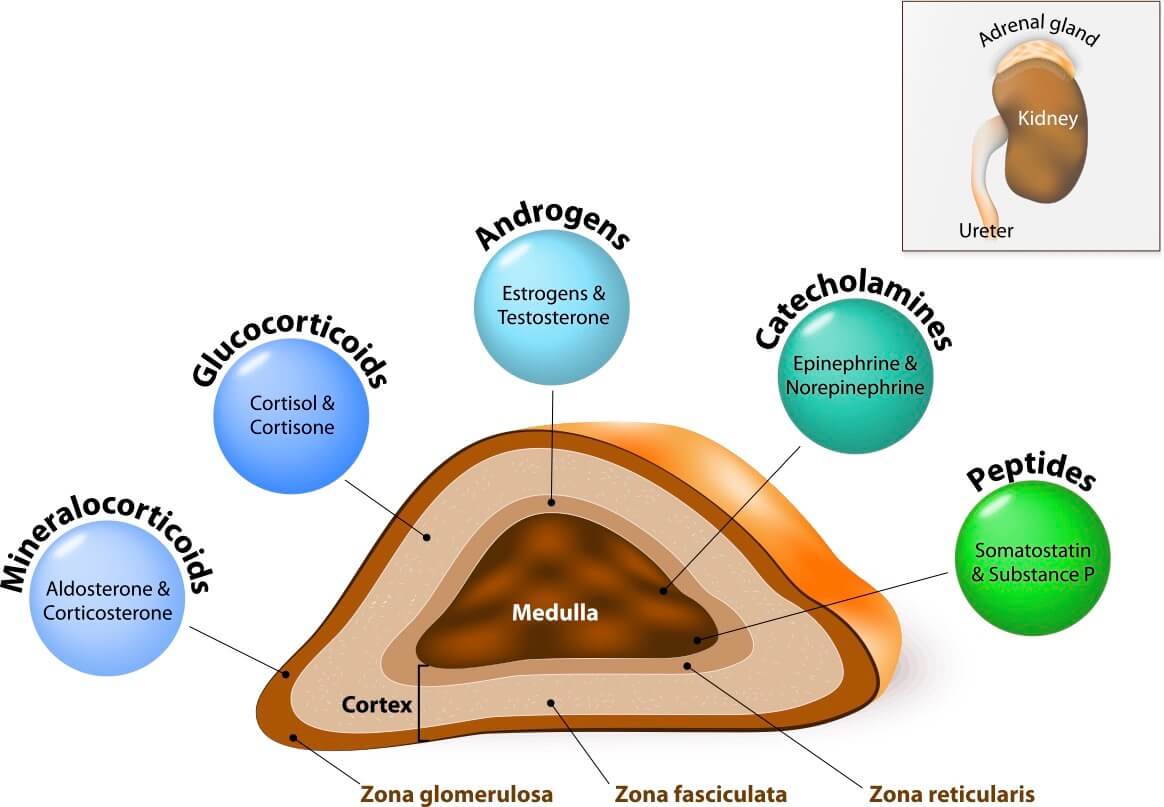
The adrenal glands are small, triangular-shaped glands that sit on top of the kidneys. They’re responsible for the body’s stress response (by managing cortisol levels), for regulating sodium/potassium and blood sugar balance, and for producing certain sex hormones (such as DHEA and androstenedione).
The adrenal gland contains nutrients including adrenal-specific peptides commonly found in the bovine adrenal cortex and adrenal medulla tissue.
Brain
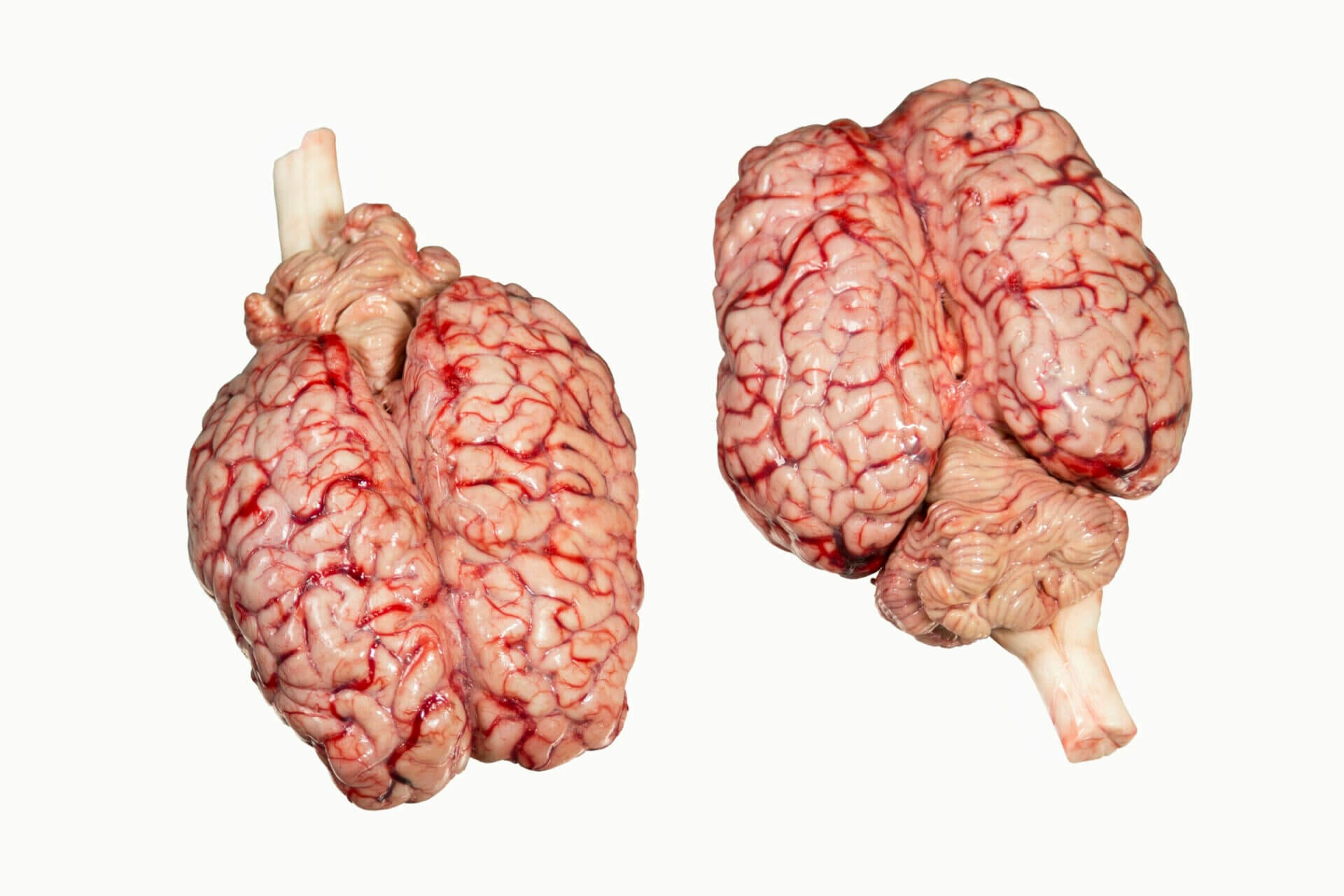
Brain is an excellent source of sphingomyelin (an important building block of high-density lipoprotein), brain-derived neurotrophic factor or BDNF (which promotes the survival of nerve cells), cobalamin (vitamin B12), vitamin C and heme iron. It’s also a good source of protein and healthy fats.
However, considering BSE and USDA regulations, it’s probably not easy to find brain — unless you butcher the animal yourself. That’s why I’d recommend considering beef brain capsules that are sourced from New Zealand, a country that hasn’t had any cases of BSE or similar diseases in decades.
That said, if I had a trusted source of brain from domestic animals, I wouldn’t hesitate to consume it.
Eye
Grass-fed beef eye tissue is an excellent source of vitamin A, omega-3 (DHA) and zinc. The eye also contains ample amounts of lutein and zeaxanthin, which act as antioxidants that protect eyes from light-induced damage.
Gallbladder

The bile in the gallbladder improves the absorption of fat-soluble vitamins, including vitamins A, D, E and K. But I’ll be honest: it’s bile, and it’s not known for tasting great.
In fact, I had never seen a recipe that called for it, until one of my Instagram followers let me know about a Filipino soup called papaitan, which is made entirely from organs and which uses extracted bile juice as part of its broth.
You can even purchase pre-packaged bile, as shown in the photos below:
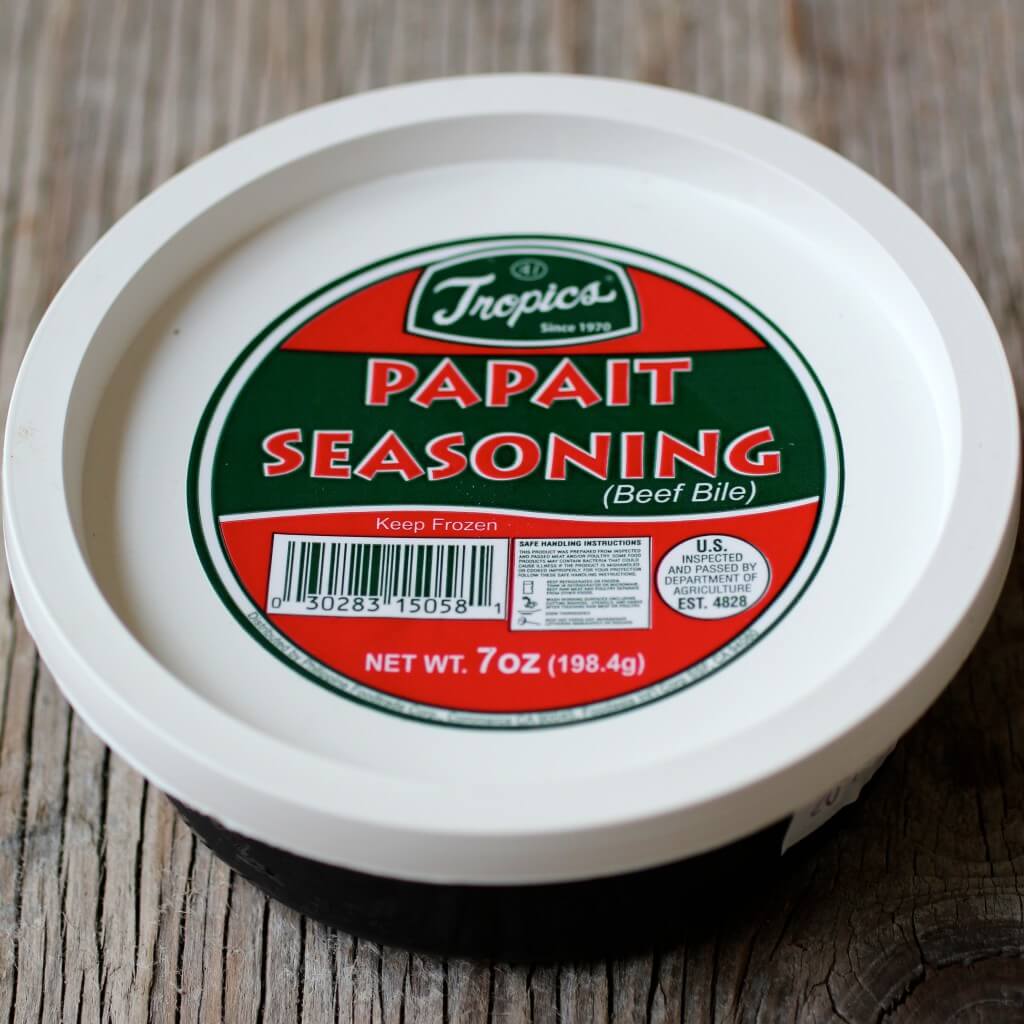
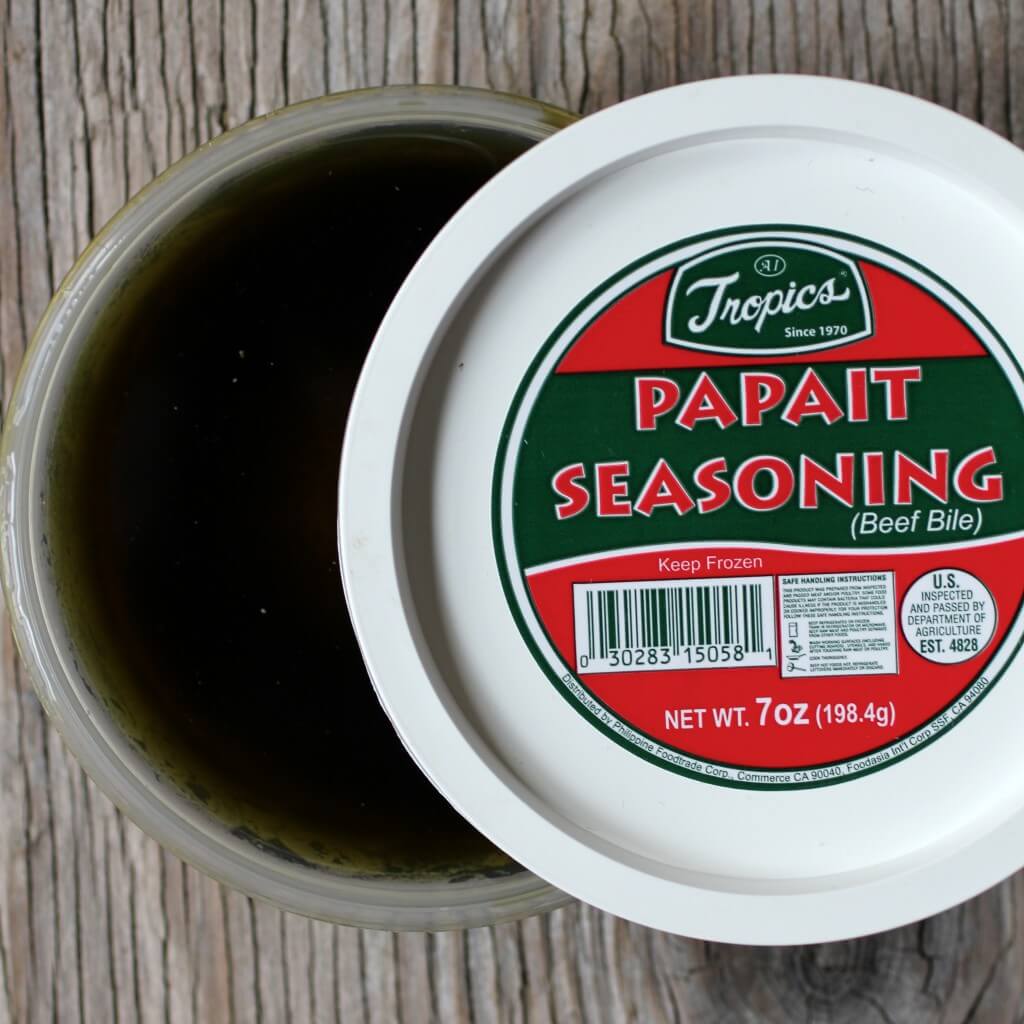
Check out this papaitan recipie — which calls for heart, intestine, tripe, liver and kidney — if you’d like to give it a try.
Heart
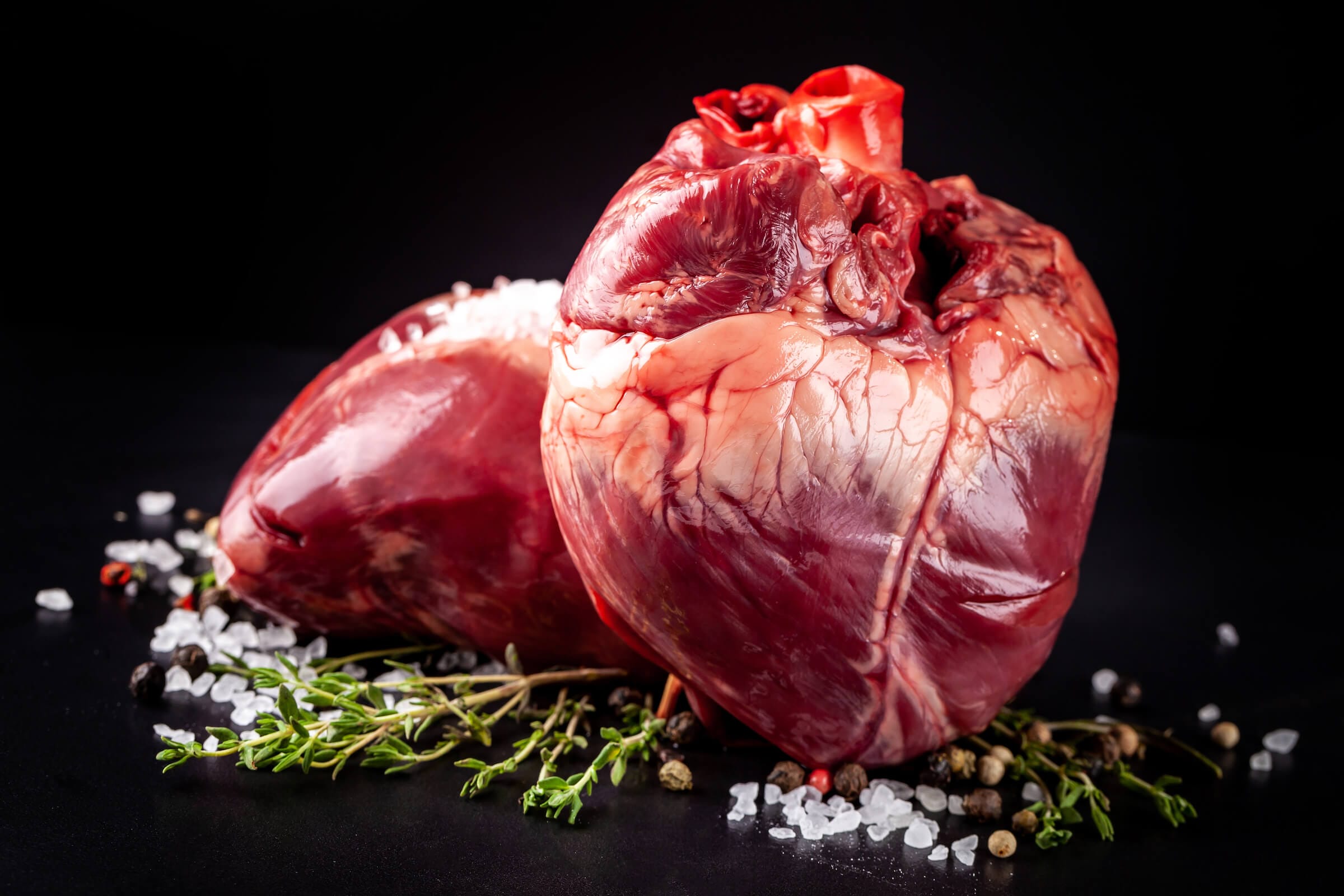
The heart muscle is an excellent source of coenzyme Q10 (CoQ10), vitamin B12, collagen, elastin and other proteins, peptides, enzymes and cofactors commonly found in heart tissue.
Heart is a muscle and, as a result, it tastes like muscle meat. (I think it tastes similar to steak.) That’s good news if you’re one of the many people who don’t like the taste of organ meat, because chances are that you will like heart. We usually slice it and then grill or fry it, just like we would a steak. I promise, it tastes delicious!
Intestines
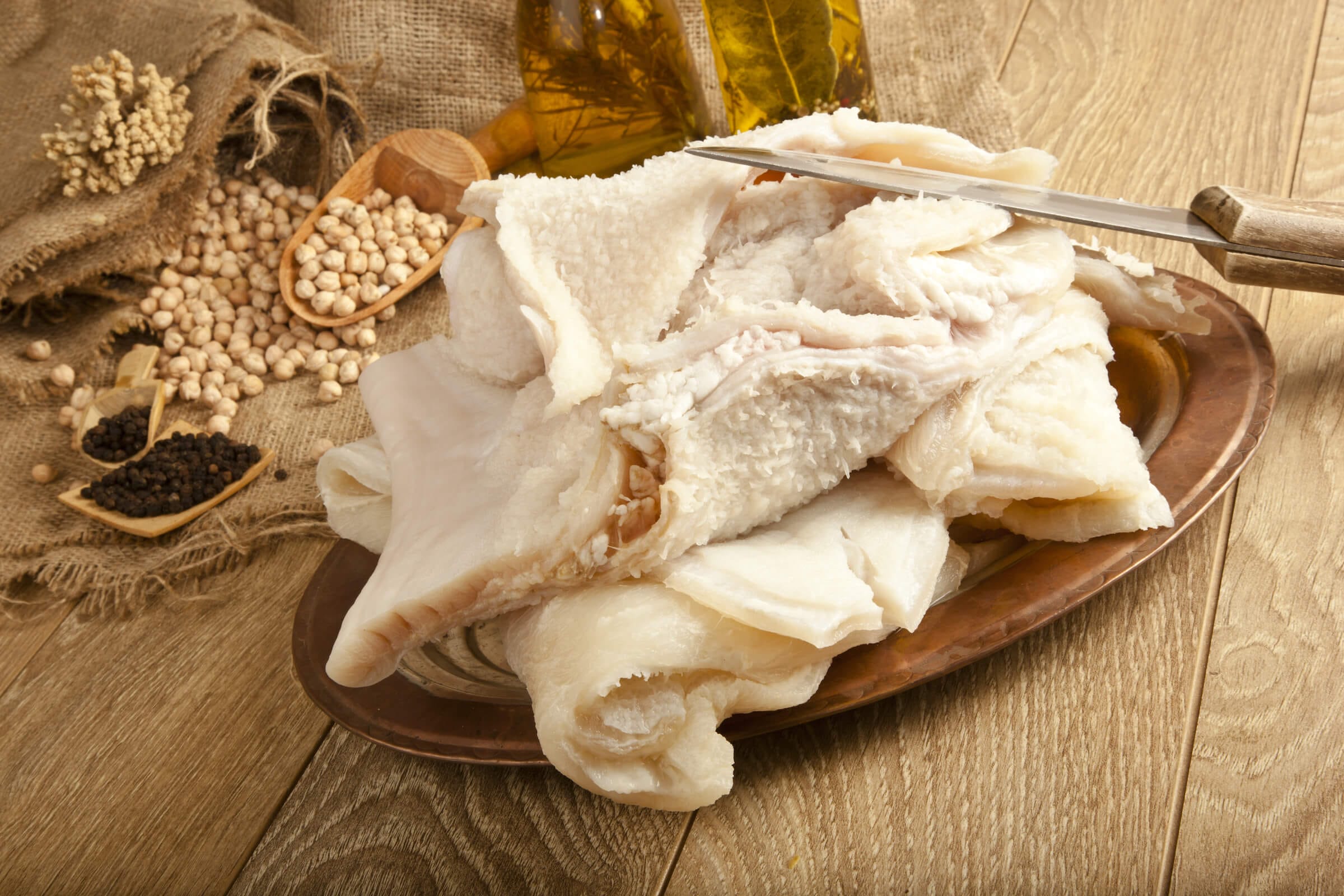
Intestines are an excellent source of vitamin B12 and selenium. Whenever I travel to Latin America, I try to find some fresh Sopa de Mondongo, a soup made with diced tripe and slow-cooked with vegetables.

I’m going to be honest: the first time I tried Mondongo at my in-law’s house in Costa Rica, I couldn’t stomach it (pun intended). But over the years, I’ve learned to get over the thought of eating a cow’s stomach and have come to realize that it’s really delicious.
Kidney
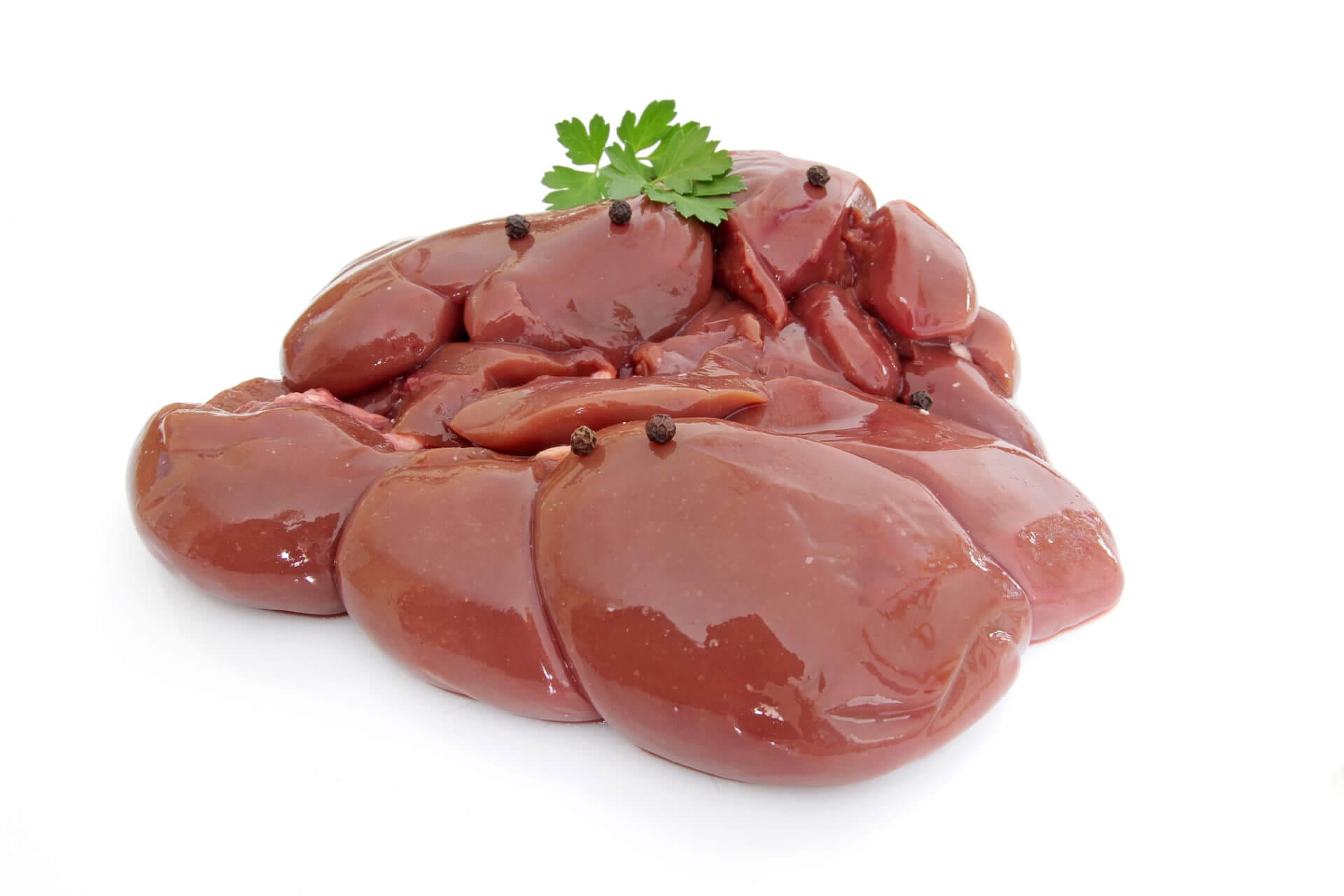
Grass-fed kidney is an excellent source of diamine oxidase (DOA), an enzyme that helps break down excess histamine in your body. Too much histamine can lead to food sensitivity issues and other health conditions.
So if you’re having issues with allergies or other auto-immune maladies, consuming kidneys might improve your situation.
Liver
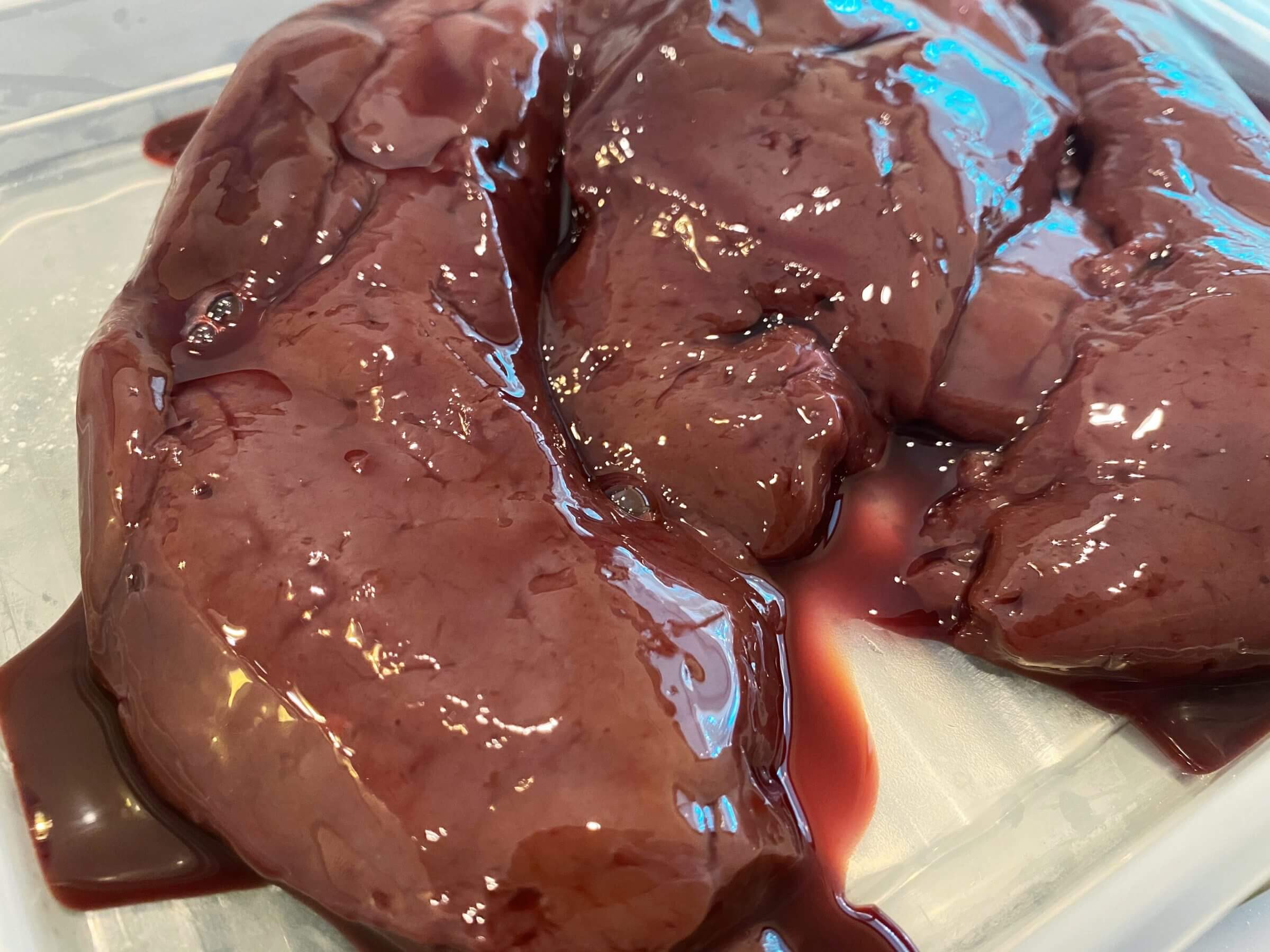
Ounce for ounce, grass-fed liver is the most nutrient-dense food on the planet. By consuming liver, you can get most of the vitamins and minerals you need on a daily basis.
As a result, I highly recommend making liver a regular part of your diet, consuming it several times per week. We usually do that in the form of liver pâté that I make from scratch using this recipe.
Additionally, my wife often makes meatballs by mixing grass-fed ground beef with some liver. The ground beef masks the taste of the liver, so even the kids eat it without hesitation.
Frankly, it’s the only method we’ve found to get our kids to eat liver, besides offering them freeze-dried liver capsules.
Note: I wrote an entire article dedicated to the health benefits of eating beef liver.
Lung
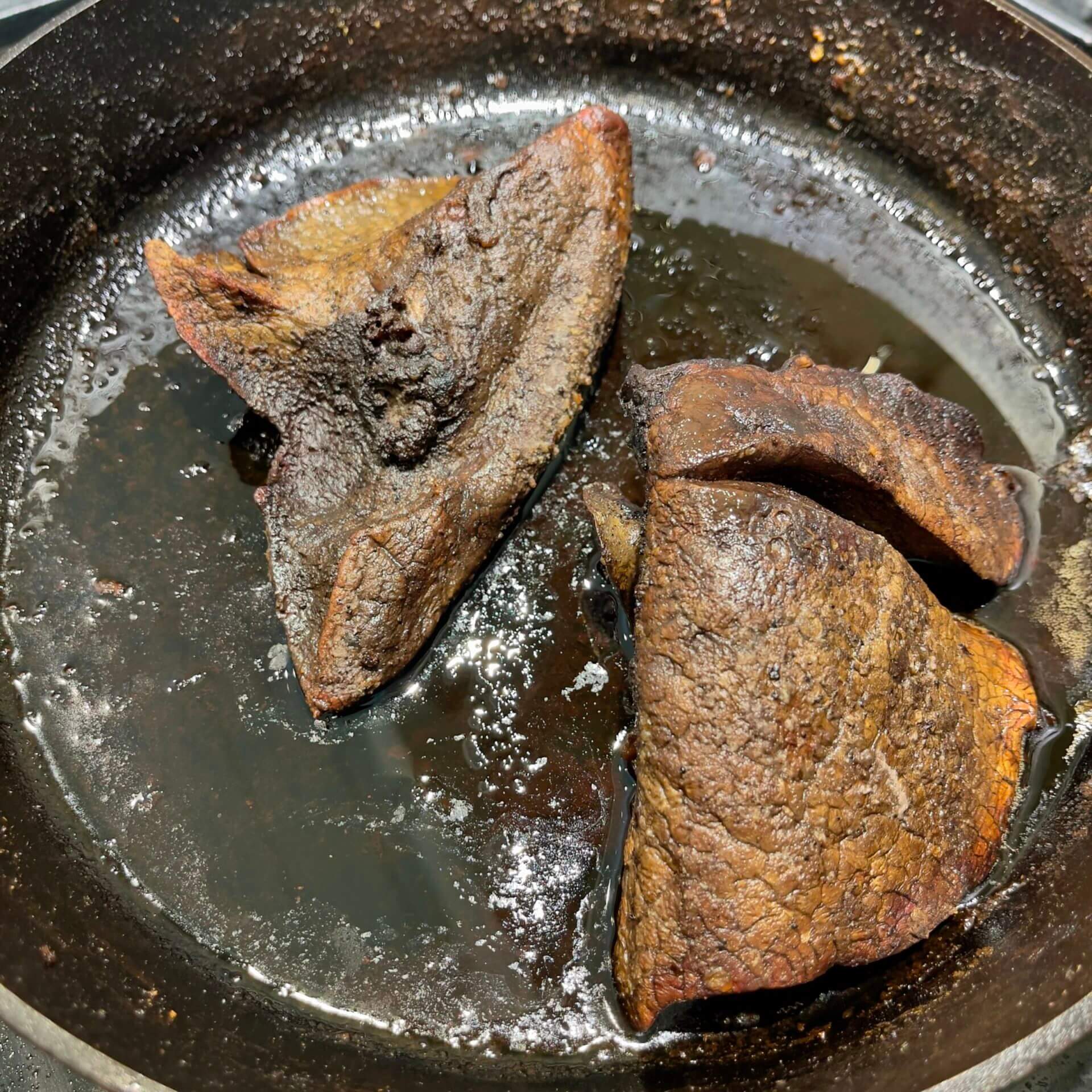
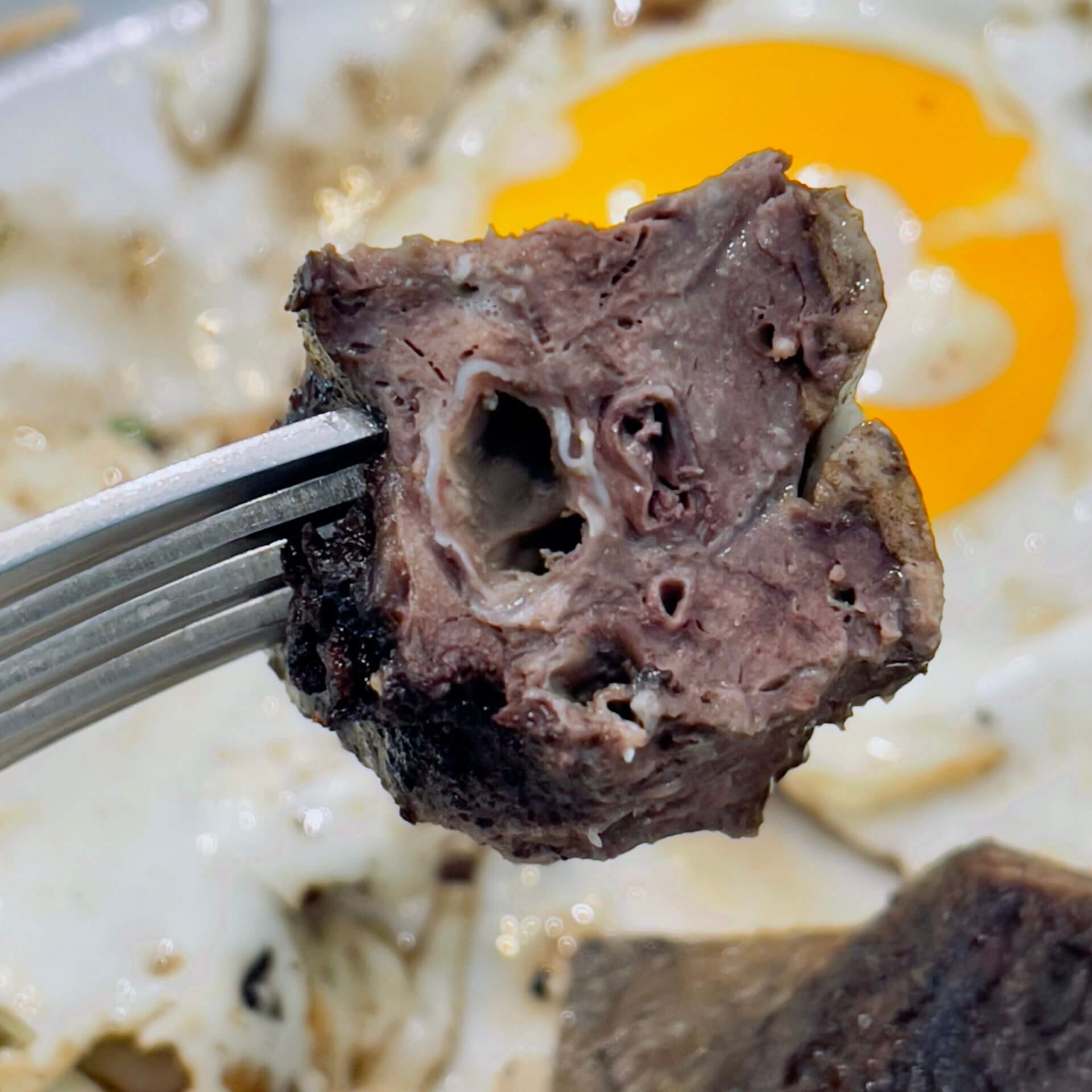
Grass-fed lungs are an excellent source of vitamin C and vitamin B12, and contain ample amounts of other B vitamins, including riboflavin, niacin and pantothenic acid. Lungs are also a great source of the following minerals: copper, heme iron, phosphorus, potassium, selenium and zinc.
A friend of mine recently gave me the lungs from two deer he killed on his last hunting trip. I wasn’t sure how to prepare them, so I just added some salt and pepper and fried them with tallow in a cast iron pan.
I wasn’t sure what to expect taste-wise, but I was pleasantly surprised that lung, much like heart, has a really pleasant taste.
Pancreas
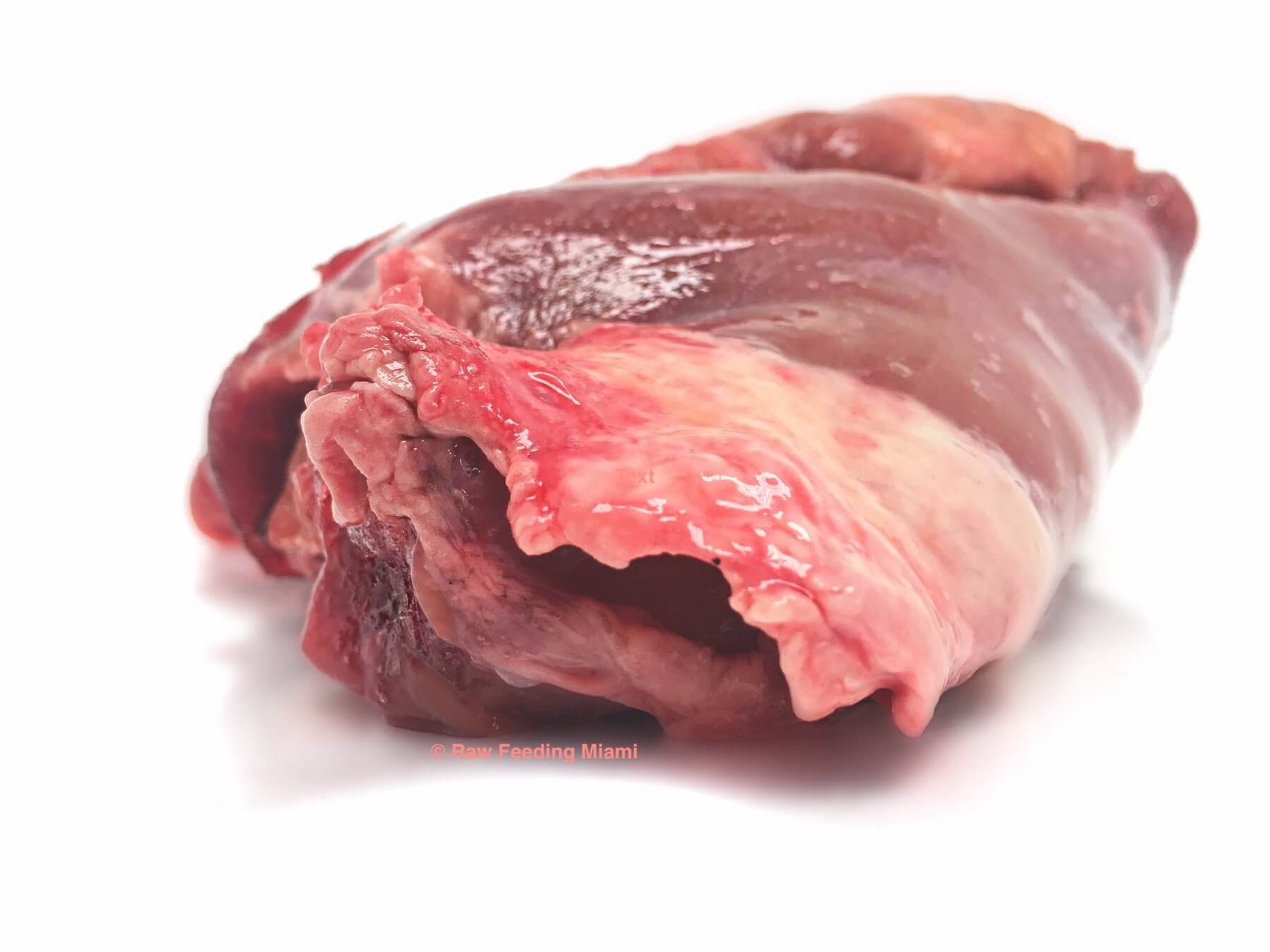
Grass-fed pancreas is an excellent source of pancreatic enzymes — such as amylase, lipase, protease and trypsin — which are required for breaking down fats, proteins and carbohydrates.
If you follow a high-fat diet but don’t consume enough lipase, and then suffer from indigestion or heartburn, consuming pancreas can help.
Prostate
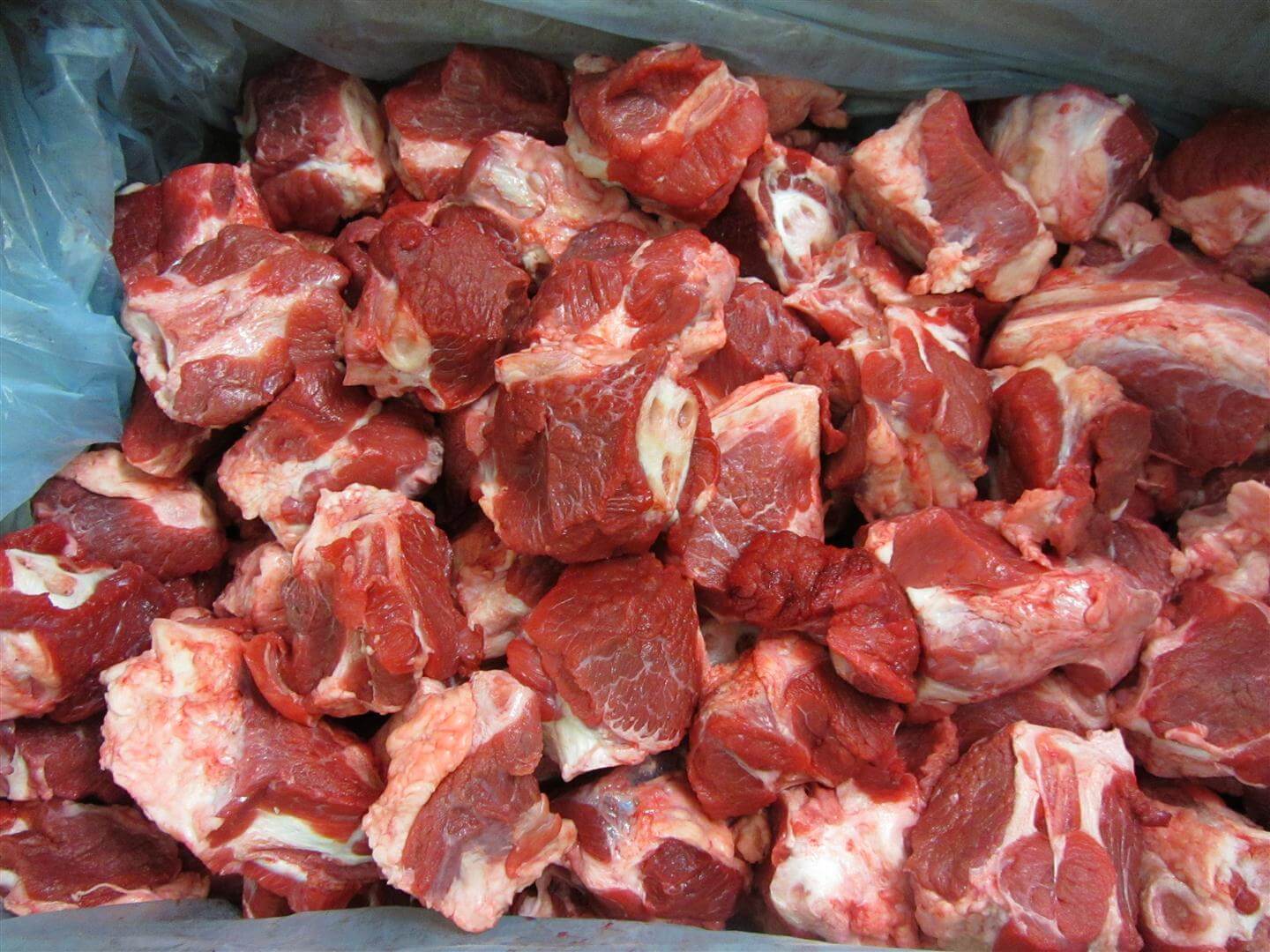
Grass-fed prostate contains the building blocks of healthy prostate tissue, including proteins, peptides, enzymes and cofactors.
Spleen

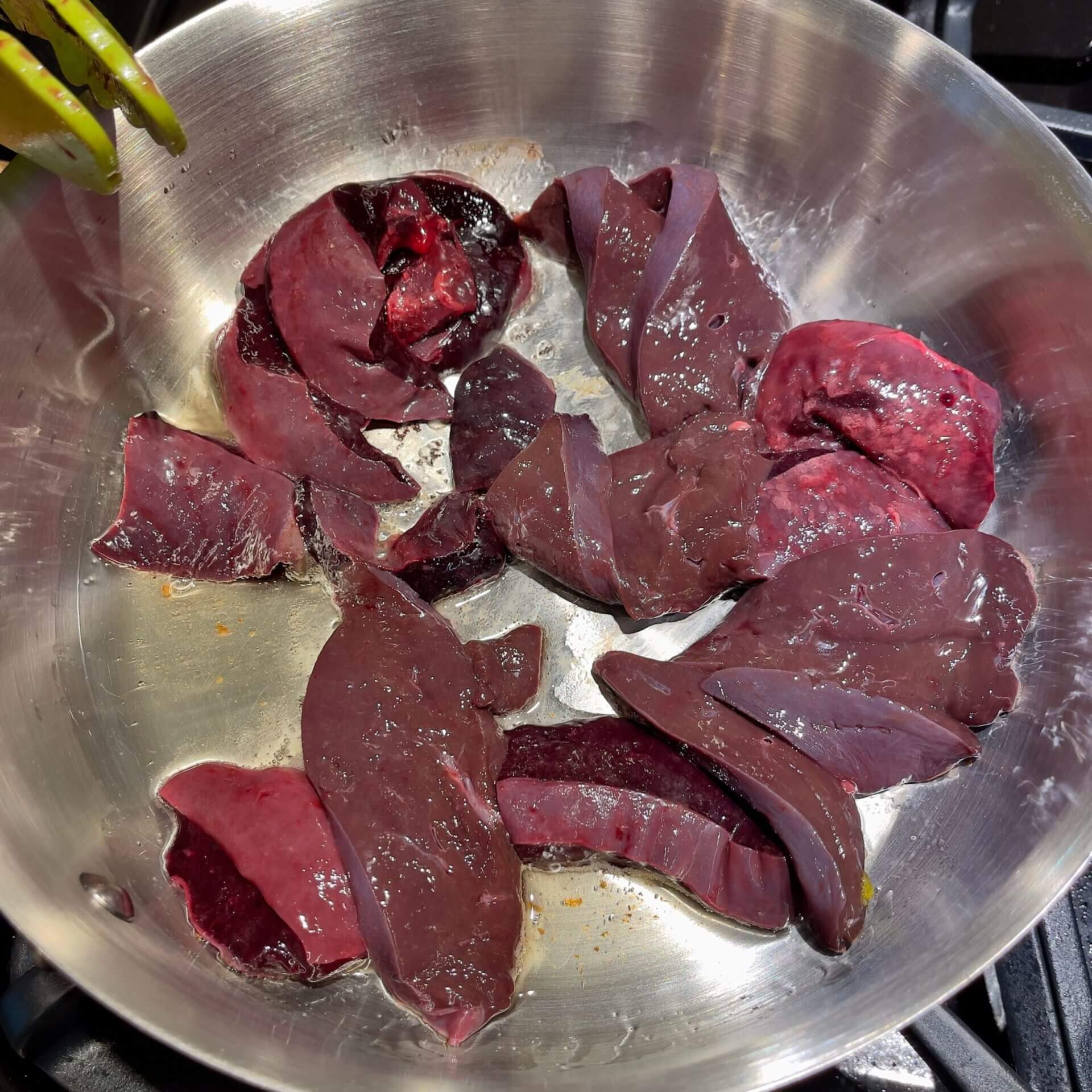

Grass-fed spleen is the best source of bioavailable heme iron (12.5 mg per ounce). Splenic tissue is also an excellent source of splenin, tuftsin and splenopentin peptides, which enhance immune function.
I often mix liver and spleen when making pâté because it helps to mask the taste of the liver.
Thymus
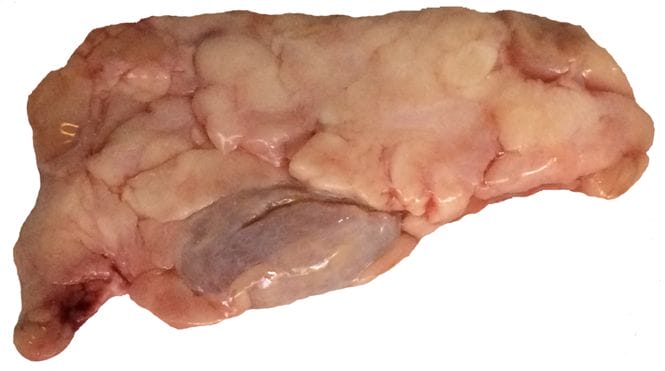
Grass-fed thymus is an excellent source of proteins that help make disease-fighting T cells, support immune health, and enhance natural killer cell activity.
Thyroid
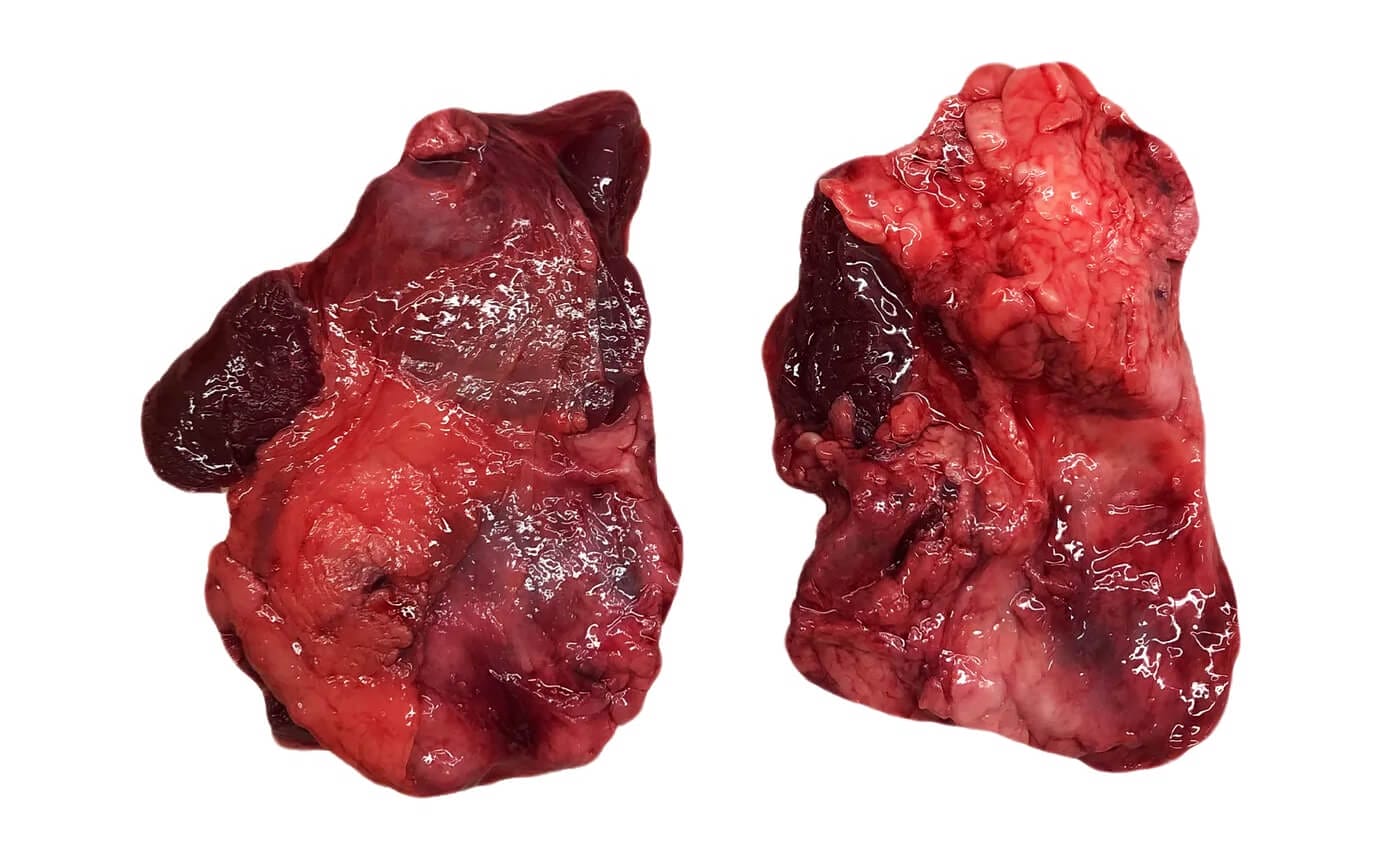
Grass-fed thyroid is a good source of preformed vitamin A, B12, choline, folate (as opposed to the synthetic version called folic acid), heme iron and other micronutrients commonly found in thyroid tissue.
Trachea

Grass-fed tracheal cartilage is a rich source of Type 2 collagen, glycosaminoglycans, proteoglycans and chondroitin sulfates. The latter two are vital building blocks of cartilage tissue.
Tongue


Tongue meat is an excellent source of calories and fatty acids, and it’s loaded with zinc, iron, choline and vitamin B12. I usually pan-fry or grill tongue (similar to how I prepare steak).
Micronutrients In Beef Organ Meats
The table below provides an overview of the key nutrients found in the most common beef organ meats. Organ meats from other animals have a similar micronutrient composition, but the individual vitamin and mineral amounts may vary slightly.
I put this table together based on information from the USDA (FoodData Central) and similar governing bodies of other countries, including New Zealand (Food Composition Data) and the European Union (European Food Safety Authority).
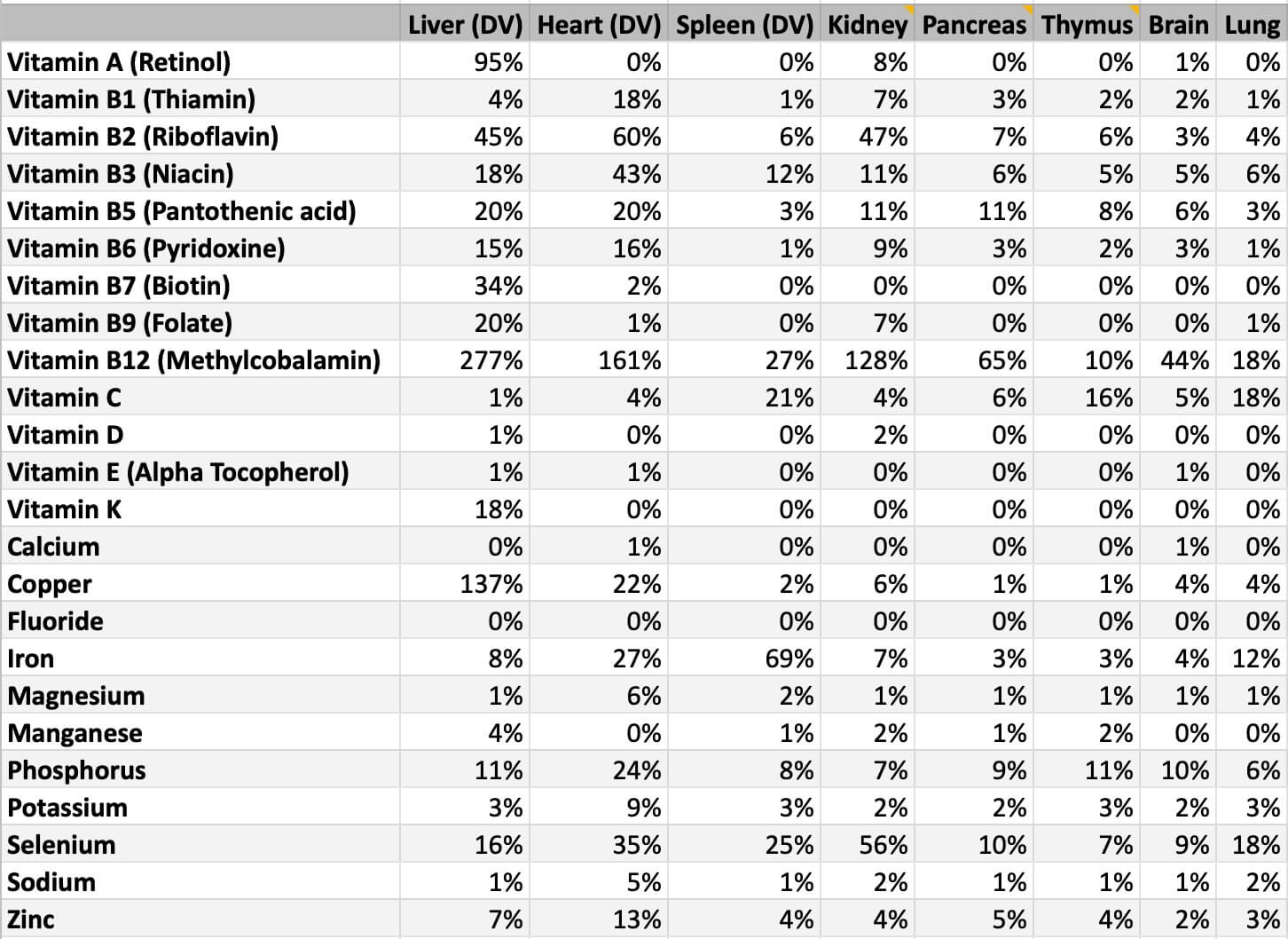
As you can see in the table above, beef liver is the king of micronutrients, followed by heart and spleen. That’s the reason why I aim to make fresh or freeze-dried beef liver a daily part of my diet.
Where to Buy Organ Meat
In the United States, finding high-quality organ meat can be difficult. For example, the only organ meat I’ve ever seen at Whole Foods is air-chilled chicken livers.
The good news is that I’ve found a couple of farms, including White Oak Pastures, that sell individual organs. You can also get them when purchasing the meat of an entire animal.
For example, once a year we purchase an entire pasture-raised cow from Big Hickory Farms here in Georgia.
The caveat is that as per USDA regulations, only the liver, heart, kidneys, spleen, pancreas and testicles can be harvested. More “exotic” organs — such as the adrenal glands, brain, lungs, intestines and eyes — have to be discarded if the animal is processed in a USDA-certified facility.
You could also check with your local butcher and ask if they can get you organ meats from the farms they work with. Plus, I’ve discovered that certain Indian supermarkets sell goat organs.
Isn’t it odd that the government prohibits you from sourcing some of the most nutrient-dense foods on the planet while not restricting the production and sale of processed carbs, soft drinks and other disease-inducing foods?
The argument of the USDA Food Safety and Inspection Service (FSIS) is that certain parts of the animal, such as the brain, carry an increased risk of food-borne illnesses. While that’s true, the risk is negligible, in my opinion.
For example, in the past 15 years, the USDA has only confirmed six cases of BSE in the United States — most of which were related to imported cows. Plus, it’s entirely unclear how many of these cases involved 100% pasture-raised animals as opposed to feedlot-raised cattle.
If I had to guess, animals that grow up in a species-appropriate environment and are fed a healthy diet are far less likely to develop any disease than their grain-fed and feedlot-raised counterparts.
On the flip side, you hear about E. coli and other issues associated with produce on an almost weekly basis, and nobody prevents manufacturers from selling spinach. I find that mind-boggling.
How Much Organ Meat Should You Eat?
How much organ meat you can and should eat depends on the type of organ. Certain organs, including the liver and the spleen, contain high amounts of fat-soluble vitamins and iron that can be toxic if you overindulge.
That’s why I limit my intake of liver and spleen to approximately one to two ounces per day.
On the flip side, I eat as much heart, tongue and kidney as I want, because they contain mostly water-soluble vitamins that don’t accumulate and cause issues.
If you plan on using organ meat supplements you should know that 3 grams of freeze-dried organ meat corresponds to approximately 1 ounce of fresh organ meat.
What to Do if You Don’t Like Eating Organ Meat

Even if you have easy access to fresh organ meat, the problem is that most people are turned off by the thought of eating organs (as I discussed in my blog post about the best beef liver supplement brands).
In fact, I’ve heard from many people who are disgusted by the thought of eating these animal parts — even though they’ve never tried them.
Some of them have tried liver, which is known for its strong taste, and assume that eating other organs will be a similar experience.
I don’t blame them, because I used to be in the same boat. I tried liver when I was younger, didn’t like it, and then never tried organ meat again until just a few years ago.

The good news is that many animal organs taste really good, and you can even prepare liver in a way that masks the strong flavor. In fact, I eat liver pâté almost every day and genuinely like its taste.
Check out my liver pâté recipe if you want to give it a try.
If none of that convinces you to consume fresh organ meats, then desiccated organ meat supplements are for you.
These supplements are made using a gentle freeze-drying process that removes water, carbon, hydrogen and oxygen molecules, while preserving most of the macronutrients and micronutrients (including fat, protein, vitamins and minerals).
In other words, you can get all the benefits that organ meat offers without the taste implications or the need to cook them.
Don’t get me wrong: I always try to get as many nutrients as possible from fresh food.
But I realize that can be a challenge when it comes to organ meat. That’s why I supplement with freeze-dried organ meats on a daily basis.
Organ Meat Benefits FAQs
Now that we’ve established the benefits of consuming (beef) organ meat, and I’ve outlined an alternative to eating fresh organ meat, let’s answer some of the most common questions (and talk about some of the misconceptions) surrounding the consumption of organs.
I strongly believe that everybody should make organ meat part of their diet!
Our ancestors and early humans leveraged organ meat as their primary source of nutrients for millions of years. Heck, even my grandparents had plenty of organ meat (and pig blood) in their diet when they grew up in Austria.
By removing organs from our diet, we have eliminated the best source of micronutrients, leading to a higher prevalence of vitamin deficiencies and chronic diseases.
That’s because plants aren’t a great substitute for organs when it comes to nutrient availability and absorbability. Plus, the nutrient content in plants has been on the decline, due to soil depletion and other factors associated with industrial farming practices.
As a result, I encourage everyone to consume more organ meat — if not fresh then in the form of supplements!
While I agree that liver can have a strong taste (depending on how you prepare it), most organs actually have a very pleasant taste. For example, both heart and lungs have a similar taste and texture to muscle meat. With your eyes closed, you might even mistake them for steak.
For our 2020 Thanksgiving dinner, my buddy and I challenged his 12-year-old son (who is a picky eater) to try raw turkey heart and liver with us. To our surprise, he ate both and actually liked how they tasted. So if a picky 12-year-old can eat (raw) organ meats, I think anyone should be able to at least try them.
Most grain-fed cattle are metabolically sick by definition. Think about it: cows get fed grains so they’ll fatten up quickly, and we know that both humans and animals who are obese suffer from a host of metabolic issues and chronic diseases.
That’s the primary reason why I strongly recommend staying away from foods that were harvested from grain-fed animals.
The second argument against the consumption of grain-fed beef is animal welfare. I don’t want to support an industry that keeps animals in feedlots and that feeds them a diet that’s inappropriate for their species.
In other words, I believe in voting with my dollars, and my vote goes to farmers who practice regenerative agriculture. That’s better for my health, the health of the animals, and the health of the planet.
Consuming fresh organ meat doesn’t pose a higher risk of catching food-borne illnesses than consuming muscle meat (such as steak), as long as you follow the recommended food handling and preparation guidelines.
As far as desiccated organ meat is concerned, make sure you purchase from brands (such as MK Supplements) that have their ingredients tested by a third-party and that use GMP-certified manufacturing facilities. If you do, you can rest assured that you’re not exposing yourself to any food-born pathogens.
It’s true that the job of the liver and the kidneys is to filter out toxins from the bloodstream. But that doesn’t mean the toxins are stored in those organs.
For example, immune cells (called kupffer cells) inside the liver’s sinusoid channels engulf toxins before digesting and excreting them. The same principle applies to toxins filtered out by the kidneys.
As a result, it’s safe to consume both liver and kidneys, and you can rest assured that you won’t ingest any toxins by eating either organ.
It’s true that liver is a great source of vitamin A. But unless you’re eating the liver of a polar bear (which has up to nine million units of vitamin A per pound), there’s no real risk of ingesting toxic levels of vitamin A when consuming small amounts of fresh liver or when using freeze-dried liver supplements.
My wife and I try to consume about 1 ounce of fresh liver, or 3 grams of freeze-dried liver, per day. Our kids get a third of that, usually in the form of capsules.
To put that into perspective, 1 ounce of fresh liver contains approximately 5,000 IUs of vitamin A. That’s about 116% of the recommended daily allowance (RDA) and well within the “safe limits.”
You can learn more about how vitamin A works in the body in my list of the best vitamin A supplements, which goes into detail about proper dosing, benefits and risks.
No. The myth that saturated fat and cholesterol increase your risk of heart disease has long been debunked. I wrote about this in more detail here, but in a nutshell, studies have confirmed that there is no correlation between consuming high amounts of saturated fats and cholesterol and any chronic disease.
In fact, I recommend removing polyunsaturated fats from seed oils from your diet and replacing them with saturated fats!
Western medicine suggests that consuming too much organ meat (and red meat) can cause gout, and that people who suffer from this disease should reduce their consumption of these foods because they have high levels of purine and can contribute to high blood levels of uric acid.
What most people don’t know is that over 60% of all uric acid is produced by the body and only about a third stems from the food you eat.
What’s important to understand is that most people who suffer from gout have issues eliminating uric acid via the kidneys rather than overproducing it.
Additionally, studies have shown that the increased consumption of foods that contain large quantities of purine usually leads to an increase of uric acid excretion.
In other words, if you’re metabolically healthy, there is no need to limit your intake of red meat or organ meats. If you currently suffer from gout, I recommend making the appropriate lifestyle changes to become metabolically healthy, so you can increase your intake in organ meats.
These days, you can find dozens of brands on Amazon and other online stores that offer organ meat supplements. Unfortunately, not all of them offer the same quality as some of the brands that I use and recommend.
When buying organ meat supplements, make sure the product is from 100% pasture-raised and grass-fed cows, that the organs were freeze-dried (desiccated) rather than heat-dried (which destroys nutrients), and non-defatted.
Freeze drying preserves most of the micronutrients found in liver. Some supplement manufacturers use a production process that involves very long durations of very high heat. This process is inexpensive and scalable, but it significantly degrades the supplement’s nutrient profile.
With that said, it’s important to note that there is some heat exposure during the free-drying process. Specifically, the United States Food and Drug Administration requires that organ meat supplements important from Australia, Argentina, New Zealand and other countries be sterilized. Some manufacturers use high-heat sterilization (i.e., heat drying), while others use irradiation or chemical fumigation (via toxins such as ethylene oxide or 2-chloroethanol).
The best option is low-heat sterilization, which preserve most of the organ meat’s micronutrients. This involved exposing the freeze-dried organ meat powder to 165-degree heat for five hours to ensure that any potential pathogens are destroyed. This is relatively minor compared to the heat-driven manufacturing process many brands use.
I also recommend sticking with products that come in eco-friendly and non-toxic containers (i.e., glass bottles with metal lids).
If you apply all of these specifications you’ll realize that not many reasonably-priced products fit the bill. That’s why I decided to develop my own supplement.
Absolutely, but in lower amounts than adults. As I mentioned earlier in this article, our kids (ages five and seven as of this writing) consume approximately a third of the amount of liver as me and my wife.
Besides using supplements, we’ve seen the best success when mixing liver with ground beef to make meatballs. That way, we can sneak liver into their diet without them being put off by its strong taste.
In addition to the organs I discuss throughout this article, we also regularly eat tongue and oxtail. We also slow-cook bones to make bone broth to get some of the connective tissue, cartilage, and bone marrow into our bodies. These byproducts are usually high in protein and other nutrients, such as collagen.
Organ meat (and liver and spleen in particular) is a great option if you suffer from iron deficiency or anemia. That’s because both of these organs have high amounts of bioavailable heme iron that can support the body in making red blood cells.
I regularly eat raw liver and heart, but only when I trust the source of the organs. Consuming raw meat (including organ meat) increases the risk of food-borne illness. So you have to make sure you handle raw organs in the same manner you handle raw red meat.
Yes, consuming organs that are rich in certain nutrients (such as selenium — an important cofactor for the body’s antioxidant defense), including liver is an excellent way to help reduce oxidative stress. However, it’s also important to avoid lifestyle factors (e.g., smoking) and foods (e.g., vegetable oils) that cause oxidative stress in the first place.
Organs aren’t rich sources of magnesium, but heart is arguably one of the best sources, containing 6% of the daily recommended dose of magnesium per ounce.
Heart and liver are some of the best sources of vitamin B6, containing approximately 15-16% DV of B6 per ounce.
Absolutely! Our ancestors and early humans have always cherished organ meats as their primary source of essential micronutrients.
Organ Meat Benefits: Final Thoughts
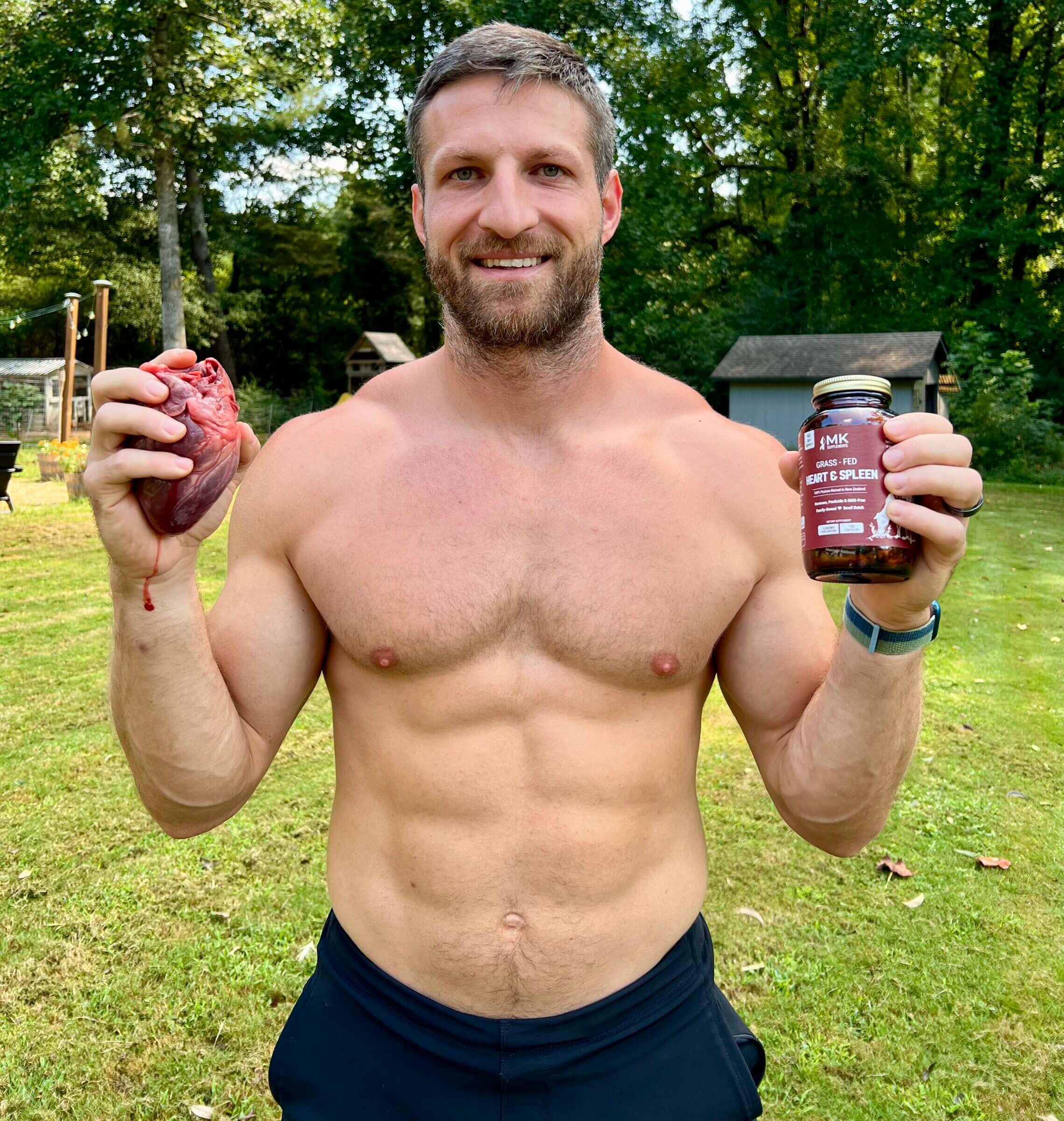
Animal organs are a nutritional powerhouse and the best source of micronutrients for humans and other carnivorous species. As such, I firmly believe they should be at the center of our diet to support optimal health and well-being. Plus, the consumption of organ meats reflects how humans evolved over millions of years.
Liver is arguably the king of organs, and I consider it to be nature’s ultimate multivitamin. That’s why I strongly recommend making it a regular part of your diet, even if it ends up being the only organ you consume on a consistent basis. If you don’t like its taste, use a freeze-dried beef liver supplement, such as the one from MK Supplements.
If you’ve found any creative ways to prepare organ meats to make them palatable to a wider audience, leave a comment below! My readers and I would highly appreciate it.

Michael Kummer is a healthy living enthusiast and CrossFit athlete whose goal is to help people achieve optimal health by bridging the gap between ancestral living and the demands of modern society.


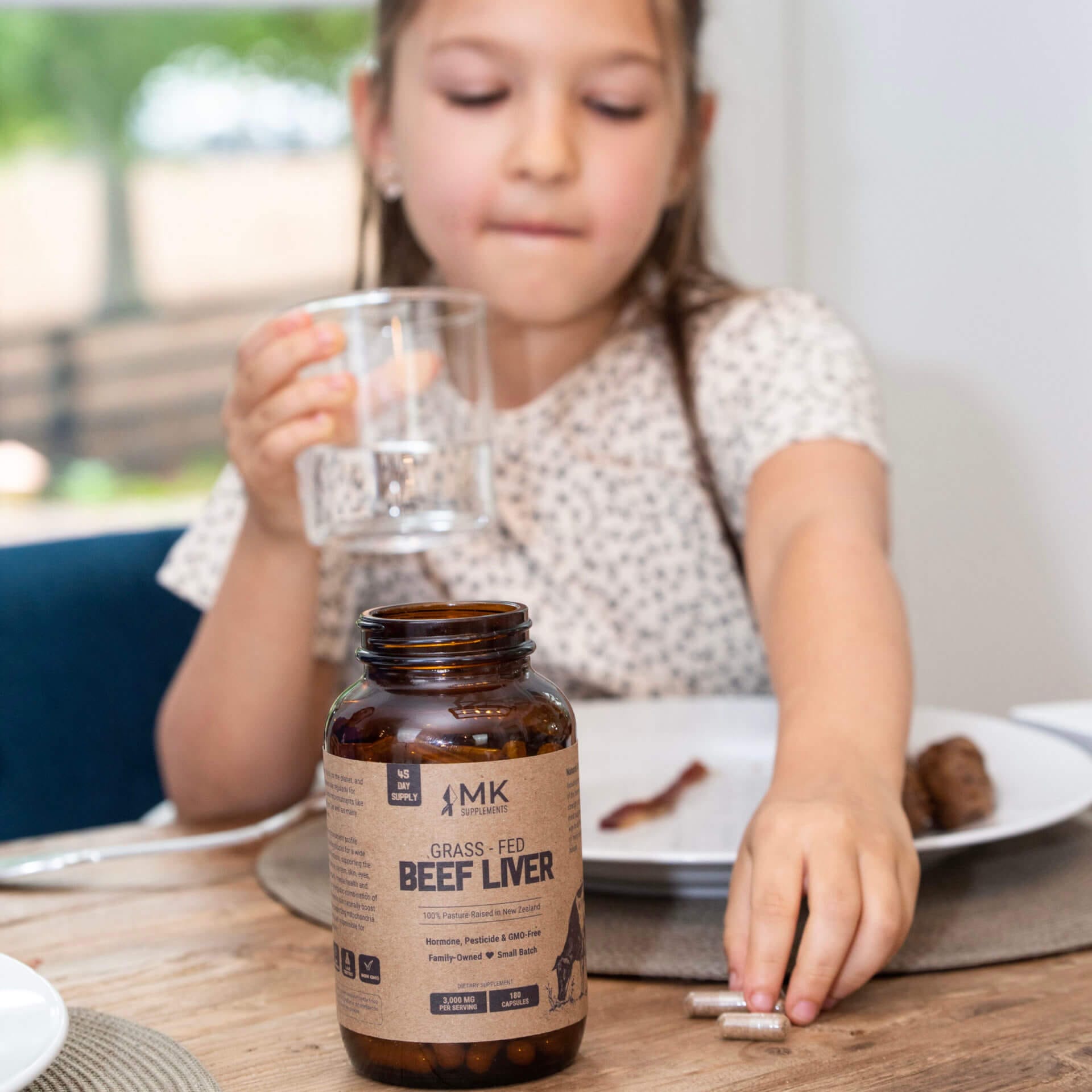

Hi Michael, some of those photos aren’t right. The beef thyroid picture is of a pancreas. Not a good one at that. Pancreas have pink globules. The brains look like lambs brains. The thymus gland is only available from calves.
Thanks, Baz. I fixed the images.
Hey Michael, danke für deinen interessanten und sorgfältig recherchierten Beitrag. Die südostasiatische Küche hat viele sehr leckere Rezepte mit Herz/Lunge etc. Leber ist da bestimmt auch dabei. Diese Gerichte sind relativ einfach zuzubereiten. Vielleicht bereichert das eure Küche. Ich werde mir gerne deine Nahrungsergänzung bestellen und ausprobieren. Alles Gute.
Hi Samyra,
vielen Danke fuer’s Feedback und die Rezeptidee! Ich guck mir das mal an!
Liebe Grüße,
Michael